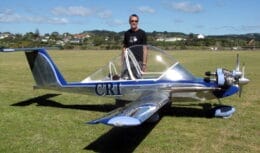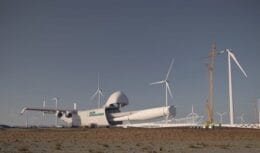
Siemens Energy's hydrogen gas and biodiesel combustion turbines provide backup power that will allow for greater integration of renewable energy
Siemens Energy announced on June 17 that it will supply two SGT6-5000F turbines to power the new Peak Power Plant at Turtle Creek Station in Papillion, Nebraska. The simple installation of cycle turbines will be used to modernize the backup generation in the OPPD fleet, meaning the plant will run only as needed to provide a resilient and reliable source of electricity for the community.
Read also
- Portable bladeless wind turbine for urban spaces could revolutionize renewable energy generation in the world
- New portable wind turbine generates energy anywhere, in addition to being able to operate in conjunction with solar panels
- The world's largest wind power manufacturer will recover and reuse all turbine blades from its global portfolio of onshore and offshore wind farms following decommissioning
- General Electric presents gigantic floating turbine that promises to revolutionize the implementation of wind energy in the world
- Multinational leader in the production of blades for wind turbines, Aeris Energy, plans to build the third factory in Ceará
- Giant 80-meter wind turbine manufactured by Aeris Energy for Nordex — one of the largest wind turbine manufacturers in the world — embarks from the Port of Pecém on its way to Europe
- The world's most powerful tidal (or tidal) turbine is ready and will revolutionize the world of renewable energy
- General Electric Renewable is building the world's largest and most powerful wind turbine to be installed on the world's largest offshore wind farm in 2023
Siemens Energy turbines offer the ability to run on up to 30% hydrogen and biodiesel in support of future technological advancements. They also offer a fast start-up time and low emissions, while helping to quickly stabilize the drivetrain to adjust for variable solar generation output.
Siemens Energy's gas combustion turbines can help decarbonize operations gradually and flexibly, allowing hydrogen produced without CO2 reducing emissions to be blended into the fuel mix to meet the market's environmental and regulatory needs.
Siemens Energy hydrogen gas turbines could pave the way to a more sustainable energy future
Ultimately, these hydrogen-capable gas turbines could pave the way to a more sustainable energy future, because they can meet a rapidly growing electricity demand in the short term, and in the medium term, they can provide backup power to supplement the renewable energy intermittency.
Siemens Energy has set an ambitious target to have all of its new gas turbines (including the SGT6-5000F) capable of burning 100% hydrogen on before the end of 2030.
“We are proud that OPPD has selected our F-Class Turbines to complement its utility-scale renewable energy generation projects,” said Rich Voorberg, president of Siemens Energy North America. “As we look to decarbonize energy systems for the future, it is important to be able to increasingly integrate clean-burning fuels such as hydrogen into our power plants, and Turtle Creek Station is a great example of how we can deliver great value to the community by offering reliable, efficient power with a small environmental footprint.”
Turtle Creek Station is part of OPPD's Power with Purpose project, which aims to provide affordable, reliable and environmentally sensitive energy services to customers. This involves the development of up to 600 megawatts of solar generation and up to 600 megawatts of modernized replacement resources and natural gas generation. The Turtle Creek station is expected to be operational in late spring 2023.
General Electric Renewable is building the world's largest and most powerful wind turbine to be installed on the world's largest offshore wind farm in 2023
The largest wind turbine in the world is being developed by GE Renewable Energy, a subsidiary of giant General Electric. The powerful turbine was named Haliade-X, and will be launched in 2021. To deliver the project, the US conglomerate GE plans to invest 400 million dollars.
The 13 MW Haliade-X offshore wind turbine will be used in the first two phases of the UK's Dogger Bank Wind Farm, with a total of 190 units to be installed from 2023 onwards.
This will mark the first installation of the world's most powerful wind turbine in operation to date in what will be the world's largest offshore wind farm.
WEG and Engie, the second largest in the world in the energy sector, complete the installation of the first National Wind Generator
WEG, one of the largest manufacturers of electrical equipment in the world, and ENGIE Brasil Energia, are concluding the most important phase of the Research and Development Project “Aerogerador Nacional”, which is the assembly of the wind turbine.
Located in the municipality of Tubarão, in Santa Catarina, the wind turbine manufactured by WEG is installed in ENGIE's experimental research and development park and is the result of a Strategic Project of the Research and Development Program (R&D) of the company with the National Electric Energy Agency (ANEEL).
The wind turbine was designed and built by WEG and the second stage of the project also relied on R&D resources from Centrais Elétricas de Santa Catarina SA (CELESC). See the full story here.









